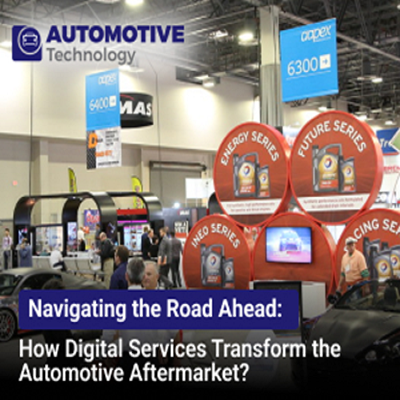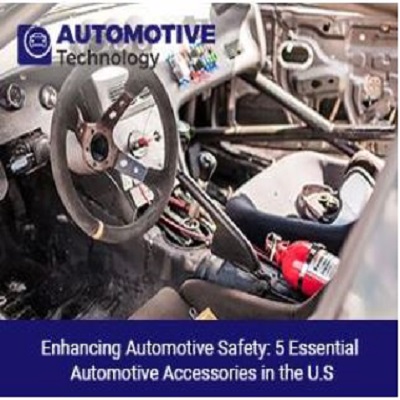Articles
Navigating the Road Ahead: How Digital Services Transform the Automotive Aftermarket?

In the ever-changing landscape of the automotive industry, staying ahead is crucial. The automotive aftermarket is swiftly evolving, with digital services and inventive parts distribution methods leading the transformation. As technology advances, it redefines how we handle vehicle maintenance and repair. Let's delve into the dynamic trends shaping the automotive aftermarket and uncover the advantages for consumers and industry stakeholders.
The Rise of Digital Services
In recent years, digitalization has become a driving force in the automotive aftermarket. Digital services are transforming the way customers interact with the aftermarket industry, providing more convenience and efficiency than ever before. Online platforms and applications are empowering vehicle owners to easily access a wide array of services, from scheduling maintenance appointments to ordering spare parts.
One significant trend in the digital landscape is the emergence of vehicle diagnostic apps. These user-friendly applications allow users to identify potential issues with their vehicles through simple diagnostic tests, providing insights into necessary repairs or maintenance. Such apps streamline the process, enabling users to make informed decisions about their vehicles without the need for a physical visit to a repair shop.
Additionally, the incorporation of augmented reality (AR) and virtual reality (VR) technologies is enriching the customer experience. This enables customers to virtually explore and comprehend the intricacies of vehicle repairs and parts replacements through interactive demonstrations, empowering them to make informed decisions about their vehicle maintenance needs.
E-commerce in Parts Distribution
The emergence of e-commerce has revolutionized how automotive parts are distributed. Online marketplaces and platforms have simplified the sourcing of spare parts, benefiting both consumers and businesses. With a few clicks, customers can access a wide variety of authentic and aftermarket parts, compare prices, and review feedback to make informed purchasing choices.
Moreover, the integration of advanced inventory management systems and predictive analytics has streamlined the supply chain, ensuring that the right parts are readily available when needed. This has significantly reduced the lead time for procuring parts, minimizing vehicle downtime and enhancing overall customer satisfaction.
The concept of same-day delivery and efficient logistics services has further amplified the convenience factor for consumers. With the click of a button, customers can now have their required parts delivered to their doorstep, eliminating the hassle of physically visiting multiple stores in search of the right components.
Enhanced Customer Engagement through Personalization
Personalization has become a key focal point in the automotive aftermarket. With the help of advanced data analytics and customer relationship management systems, businesses can now provide personalized recommendations and services tailored to the specific needs of individual customers.
Through customer databases and purchase histories, businesses can anticipate customer requirements and proactively offer relevant products and services. Personalized marketing campaigns, loyalty programs, and targeted promotions not only enhance customer engagement but also foster long-term customer relationships.
Furthermore, the integration of customer feedback mechanisms and online reviews has enabled businesses to gain valuable insights into customer preferences and pain points. By actively listening to customer feedback, businesses can adapt their strategies, improve their offerings, and provide a seamless customer experience, ultimately fostering trust and loyalty within the customer base.
The Impact of IoT and AI in the Aftermarket
The Automotive aftermarket has undergone a groundbreaking transformation with the advent of the Internet of Things (IoT) and Artificial Intelligence (AI). Integrating IoT devices in vehicles enables real-time monitoring of performance and health, providing users with timely alerts about potential issues. This proactive approach allows for necessary precautions before minor problems escalate into major repairs.
Moreover, AI-driven predictive maintenance systems have become instrumental in optimizing vehicle performance and prolonging the lifespan of automotive components. By analyzing data from various sensors and diagnostic tools, AI can accurately predict potential faults, schedule maintenance tasks, and recommend suitable replacement parts, thereby minimizing unexpected breakdowns and repair costs.
Additionally, the use of AI-powered chatbots and virtual assistants has enhanced customer support services in the automotive aftermarket. Customers can now receive immediate assistance and guidance regarding their vehicle-related queries, troubleshooting concerns, and part compatibility issues, thereby reducing response times and enhancing overall customer satisfaction.
Challenges and the Road Ahead
While the transformation of the automotive aftermarket through digital services and innovative parts distribution methods brings about a multitude of benefits, it also presents certain challenges that industry players must navigate.
One of the primary challenges is ensuring data security and privacy in an increasingly connected ecosystem. With the influx of digital services and IoT-enabled devices, safeguarding sensitive customer data and preventing unauthorized access has become a paramount concern for businesses and consumers alike. Implementing robust cybersecurity measures and complying with stringent data protection regulations are crucial steps in mitigating these risks.
Moreover, the need for continuous technological advancements and upskilling of the workforce poses another challenge for the industry. To leverage the full potential of digital services and new technologies, businesses must invest in training their employees and keeping them updated with the latest industry trends and technological developments. This ensures that the workforce remains competent and capable of handling complex digital systems and delivering top-notch customer service.
While challenges persist, the automotive aftermarket is primed for a dynamic future where digitalization and customer-centric approaches drive innovation. By prioritizing data security, upskilling the workforce, and embracing technological advancements, industry players can create a sustainable ecosystem that offers seamless services and unparalleled customer experiences.
In conclusion, the automotive aftermarket is undergoing a significant transformation, driven by the adoption of digital services and innovative parts distribution methods. With the integration of advanced technologies, enhanced customer engagement, and streamlined supply chain processes, the industry is poised for a future where convenience, efficiency, and customer satisfaction take center stage. Embracing these trends and overcoming associated challenges will be crucial for businesses to stay competitive and deliver exceptional value to their customers in the rapidly evolving automotive landscape.




